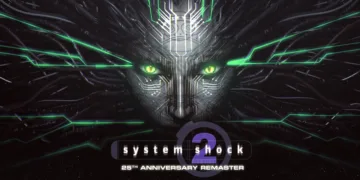Netflix Japan will release Bullet Train Explosion on April 23, a modern retelling of the 1975 film The Bullet Train. Directed by Shinji Higuchi and starring Tsuyoshi Kusanagi, the film updates the original’s premise with a present-day setting, new characters, and large-scale practical effects. The timing coincides with Netflix’s tenth year of operations in Japan and reflects its efforts to back high-budget Japanese projects outside the anime space.
The film centers on a Tokyo-bound bullet train carrying passengers unaware of a planted explosive system. If the train’s speed drops below 100 kilometers per hour, the device will detonate. The bombers demand a ¥100 billion ransom while authorities and passengers alike scramble to respond. While the storyline draws direct influence from Junya Satō’s 1975 original, Bullet Train Explosion places stronger attention on those inside the train, pushing character decisions to the forefront.
Kusanagi plays one of several passengers facing immediate consequences as the situation unfolds. Other featured characters include a school student, a social media personality, a government official, and the train conductor. The film explores how each of them handles the increasing pressure, with scenes that highlight personal choices under extreme circumstances.
Director Higuchi, known for Shin Godzilla and Attack on Titan, had been pursuing this project for nearly 20 years. His interest in remaking the film predates the recent wave of nostalgia-driven cinema and stems from a personal connection to its themes and structure. The delay was partly linked to casting restrictions involving Kusanagi, a former member of SMAP, one of Japan’s most well-known boybands.
After leaving his management agency on poor terms, Kusanagi faced industry-wide resistance. Higuchi explained that production companies avoided casting him for fear of offending the agency’s leadership. That environment shifted with the entry of global platforms like Netflix, which, unlike traditional networks, operate outside domestic power hierarchies. This opened the door for larger-scale productions that might not have been viable through conventional routes.
The production used real bullet trains for filming, a departure from the limitations faced by the 1975 version. JR East Railways, which previously denied filmmakers access to Shinkansen lines for security reasons, approved location use this time. The crew filmed seven separate sessions on a route between Tokyo and Aomori, capturing live train movement. Two full-scale cars were constructed, along with a 1/6 scale model for explosive sequences.
Shinichi Takahashi, who leads live-action content development at Netflix Japan, described the decision as part of a broader plan to offer new types of large-scale narratives. He pointed to the audience demand for realistic visuals and emphasized the effort to present the bullet train experience in a way that retains physical detail and operational accuracy.
For Higuchi, the film ties back to creative influences from his youth. Growing up, he admired Eiji Tsuburaya, George Lucas, and Steven Spielberg, and was particularly struck by the possibility of making films at a young age. A brief early career in public service gave way to directing after Higuchi realized he had no long-term interest in that path. He recalls being told that creative careers weren’t realistic, with schools steering graduates into conventional academic tracks.
While he has directed high-profile titles based on well-known properties, Higuchi continues to pursue original scripts. He acknowledged that gaining support for non-adapted projects remains difficult in Japan. Financial backers tend to prefer proven concepts, making it harder for filmmakers to secure funding for untested ideas. He noted that playwrights transitioning into film often receive support for character-driven work, and suggested that producers are sometimes more receptive to scripts that highlight performance over plot mechanics.
The film also represents a shift in how Japanese cinema is being positioned internationally. Past successes on streaming platforms have leaned heavily on anime or manga-based content. With this release, Netflix is expanding its portfolio with a high-stakes thriller that draws from local cinematic history while targeting global viewership. Alongside Bullet Train Explosion, Netflix is rolling out other projects this week including Havoc, starring Tom Hardy, and a documentary on tennis star Carlos Alcaraz.
















































